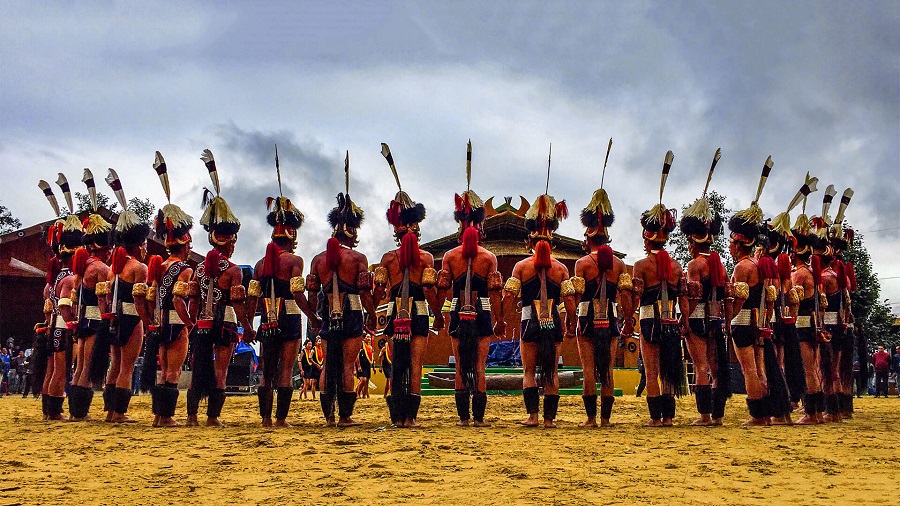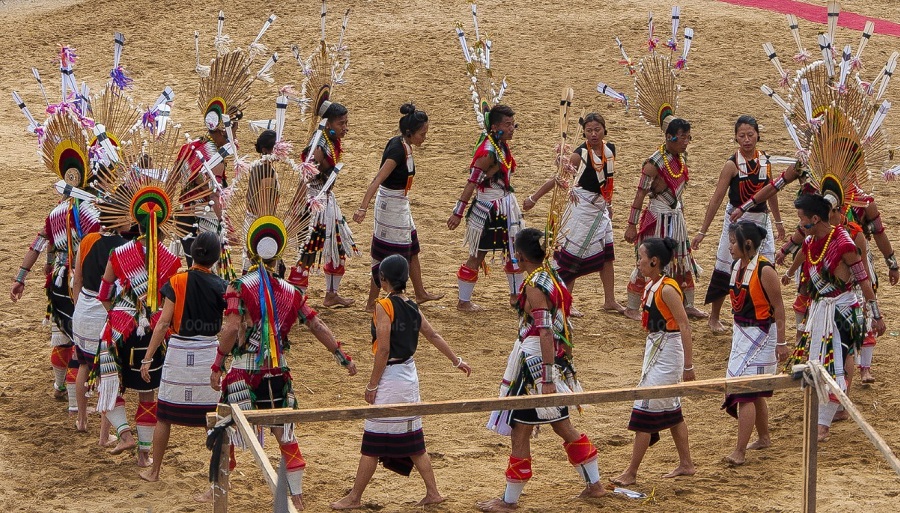Nagaland is a vibrant hill state Located in the extreme North Eastern End of India. It offers rich incomparable traditional and cultural heritage. It is the land of the Naga tribes who still practice and cherish their rich cultural traditions and customs in the grandest way.
The Naga tribes form a major portion of the Nagaland community. This tribal community is not restricted to Nagaland only but also dwells in various parts of the surrounding seven sister states, majorly Assam and Manipur. There are sixteen main groups of the Naga tribes which are: Pochury, Rengma, Angami, Ao, Chakhesang, Chang, Sangtam, Dimasa Kachari, Khiamniungan, Konyak, Sumi, Phom, Zeliang, Yimchunger, Kuki and Lotha tribe. The largest among these are the Konyaks, Angamis, Aos, Lothas, and Sumis. Apart from these there are several smaller tribes as well. These tribes belong to the Mongoloid race which is evident from their physical appearance.

Every Naga tribe is different from the other in respect of their traditions, customs, language and dresses. The costumes of the different tribes are very different from each other and are very colourful. Colourful jewellery is also an integral part of the whole attire. Traditional songs and dance forms is the most distinctive part of the rich Naga culture and are generally performed in the Festivals of the Naga tribes. The Nagas have been able to preserve their rich culture, identity, customs and traditions through these festivals. These festivals are considered to be sacred by the Naga tribes and participating in them is compulsory.
Every Naga tribe has its own festival and these festivals are one of the most colourful and eventful part of the Naga culture. These festivals revolve around agriculture which is the main occupation of the major population of the Naga tribes.
Some of the Important Festivals Celebrated are:
- Tsukhenyie by the Chakhesangs in January
- Mimkut by the Kukis in January
- Bushu by the Kacharis in January
- Sekrenyi by the Angamis in February
- Aoling by the Konyaks in April
- Moatsü by the Aos in May
- Tuluni by the Sumis in July
- Nyaknylum by the Changs in July
- Mongmong by the Sangtams in September
- Yemshe by the Pochuris in October
- Tokhu Emong by the Lothas in November
One of the most popular and grandest of the festivals is the Nazu festival of the Pochury tribe which is celebrated for 10 days in the month of February. One of the special features of this festival is the Khupielilie dance by the women of the Pochury tribe while wearing the traditional dress Ascunyi which is a very complex and beautiful dress very well adorned with beautiful bangles, armlets, ornaments, a head ribbon and a beautiful necklace.
The government of Nagaland launched The Hornbill Festival in December, 2010 to promote the cultural heritage of the state. It is a weeklong festival held from 1st to 7th December every year in the Naga heritage village. All the Naga tribes participate in this festival which is an extravagant display of Nagaland’s rich cultural heritage in all its ethnicity, diversity and grandeur. Planning a Hornbill Festival tour is a means for the visitors to understand the Naga people and their culture with an unforgettable experience.
Glimpses of the Hornbill Festival

The festival showcases an assortment of cultural displays under one roof. The colourful performances, crafts, sports, food fairs, games and ceremonies are the essence of this festival. Traditional arts which include paintings, wood carvings, and sculptures are also on display. The main events organized on the occasion of the festival consist in arts and craft selling stalls, Naga Morungs traditional exhibition, beauty contest, flower shows, herbal medicine stalls and food stalls, cultural renditions consisting in tribal dances, musical concerts, archery shows, indigenous games, Naga wrestling shows etc.
The Naga tribes along with the rich cultural heritage which can be seen in the custom, traditions and festivals of Nagaland is a rare spectacle to watch in today’s urbanized world. For the people who want to get away from the hustle and bustle of the city streets and indulge their senses in the beauty of one of the most unexplored and culturally rich places in India; Nagaland is the place to be.

